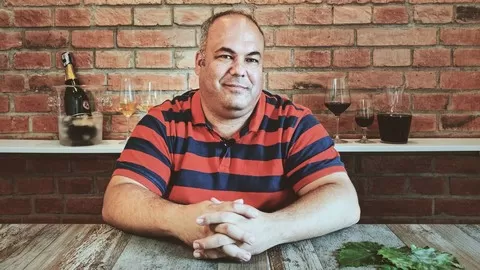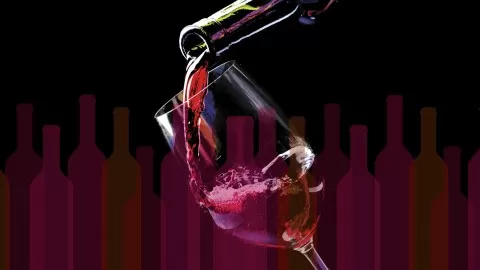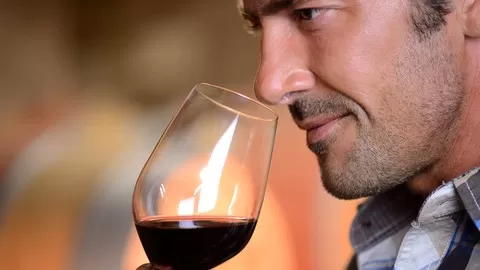Your teachers are Susie Barrie MW – Master of Wine & Andreas Larsson – Best Sommelier of the World 2007, who will teach you all about wines, wine regions, grapes, winemaking and food parings.
The Master Classes are ranked higher than WSET level 3
WineMasters Class Part 3
Part of a 48 episodes/ 8 seasons series covering all wine regions and grapes. 96 wine and food parings and countless wine making techniques explained, 48 experiments and lots of fun!
Austrian Whites (free preview of S1 by Christy Canterbury – Master of Wine & Andreas Larsson – World’s Best Sommelier 2007)
Austria makes some of the greatest dry white wines on the planet, both in terms of value and overall quality. The Danube River going through the north-eastern part of the country provides ideal conditions for the rock star white grape varieties Grüner Veltliner and Riesling. You will learn to train your palate and all about the Austrian wine regulations, one of the strictest wine laws in the world and be surprised about two wine and food pairings. To better understand the blind tastings in this episode try to taste a good Grüner Veltliner and Riesling from Austria.
Provence
This southern French region is famous for rosé wine. Most are blends and include grapes like Grenache, Cinsault, Syrah, Carignan and Mourvèdre, among others. In our experiment, we’ll explain different methods to create a rosé wine. We’ll also highlight two unique appellations in the Provence; Bandol and Cassis, which produce red and white wine respectively. Because of the terroir’s size and different variety of blends, there is no one type of Provence rosé. Each has its own geological and climatic personality. You will have to try these to learn the differences. We also recommend tasting red and white wines from this region too.
Galicia
Located in the northwest corner of Spain, the green vineyards of Galicia are dominated by many local white grape varieties, of which the Albariño grape is the best-known. But the area also boasts a wide selection of red grapes that have been increasing in both production and prestige in recent years. In our experiment, we’ll explain how winemakers ‘clarify’ their wines. We recommend trying different Albariño wines to understand the variety’s potential. Also, look out for other indigenous varieties. Don’t forget to try a red wine from Ribeira Sacra! And it’s particularly fun to compare it to a Mencía from Bierzo.
New Zealand
Sauvignon Blanc dominates New Zealand’s wine industry. Although Sauvignon Blanc is planted all over the country, Marlborough is almost synonymous with New Zealand wine. Another French grape that performs well in many places is Pinot Noir. Depending on their location both grapes can express diverse aromas, which you can learn to understand by perfecting your sniffing skills. To understand New Zealand’s Sauvignon Blanc and Pinot Noir, we recommend tasting wines from different areas to understand their noteworthy and distinct aromas and flavours.
Veneto
Veneto has a rich history of winemaking traditions of which one is drying grapes. This method is called appassimento and is used to make Amarone. We’ll explain the process in our experiment. The vineyards around the city of Verona and Lake Garda are home to some of Italy’s top wine-producing regions like Valpolicella, Soave and Lugana, which produce wines from local varieties. We recommend trying wines from all the discussed appellations, but it’s particularly interesting tasting all styles of wine made in Valpolicella, from a fresh Valpolicella Classico to a Recioto made of dried fruit if you have the chance.
Bordeaux Right Bank
Bordeaux is the most famous wine region in the world and wines are usually a blend of Cabernet Sauvignon, Merlot and Cabernet Franc. Bordeaux is split into the Left and Right Bank, today we’ll discuss the latter including the appellations of Saint-Émilion and Pomerol, which produce some of the most expensive wines on the planet. In our experiment, we’ll discuss different types of wine glasses. Bargains from Saint-Émilion and Pomerol especially are as rare as badly made wines. But if you save some money or share the costs with your best friends, it is well worthy! If you don’t want to break the bank, try the wines from Canon-Fronsac and Fronsac which can be affordable alternatives to the high-priced wines.
Austrian Red Wines
Austria’s red wines could be considered one of Europe’s unknown viticultural gems. At first glance, their names might appear unfamiliar and largely unpronounceable. But grapes such as Blaufränkisch, Zweigelt and Sankt Laurent, are definitely worthy of your attention. Our experiment is another session of a do-it-yourself palate training. We recommend buying wines from all the varieties discussed to understand the flavours and potential. You’ll have to look in the different subregions of Burgenland.







